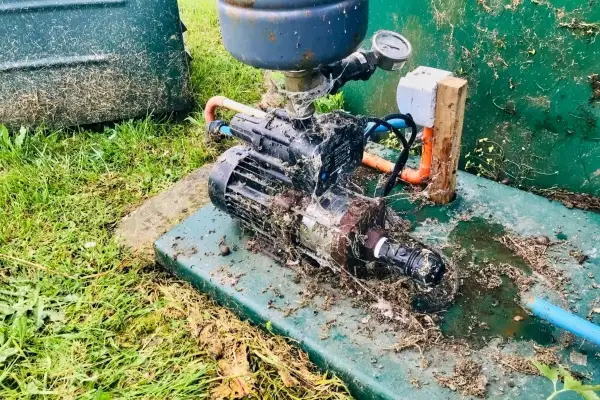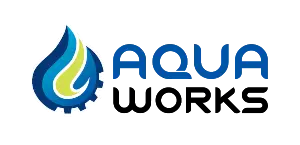No water at the tap? Take a breath. Around Warkworth and the wider Rodney/Mahurangi area, most household water systems rely on a rainwater tank or a bore, and many “pump failures” turn out to be simple issues you can check safely in a few minutes. This guide walks you through quick, safe steps, explains common causes, and shows you when to seek help. If you’re still stuck after completing the checklist, Aqua Works can dispatch a technician to you quickly for repairs or a new pump installation.
Need help now?
Call Aqua Works (Warkworth) on 0800 278 288 — same-day assistance available in Warkworth, Matakana, Snells Beach/ Algies Bay, Omaha, Leigh, Puhoi & surrounds.
Prefer email? Message healthy@aquaworks.co.nz and book a service or installation. Raewyn will call you back.
The 5-minute safe checklist (start here)
These steps are designed for quick triage without tools or technical knowledge. If anything smells “electrical” (such as a burning smell or visible damage), stop immediately and call our emergency hotline 0212 787 427.
1. Turn the power off to the pump
Turn the pump off at its local isolator switch or wall socket. This prevents dry-run damage and keeps you safe while checking basics.
2. Check the power supply
Turn the socket back on and see if the RCD/breaker has tripped at the switchboard. Reset once. If it trips again, leave it off—this often indicates a motor, cable, or control fault that needs a technician.
3. Confirm water in the tank (or bore supply)
Look in the rainwater tank or read the level indicator. If you’re on bore water, consider recent usage and drought conditions. No water = no pump flow. Make sure any isolation valves are open.
4. Bypass or check filters
Sediment/cartridge filters can clog entirely and stop the flow. If your system has a bypass valve, switch to bypass temporarily. If not, note the filter’s age; many homes need 6–12 monthly changes (more often after heavy rain).
5. Look for obvious leaks/air on the suction side
On rainwater systems with a surface (jet) pump, the inlet/suction line must be airtight. Check unions, elbows, and the line into the tank. Drips or bubbles are a red flag for air ingress—your pump can’t “lift” water if it’s sucking air.
6. Check for prime (surface/jet pumps only)
If your pump has a priming port on top, it may have lost prime. With the power off, remove the cap and fill it with clean water until it is full. Refit the cap firmly, then try a brief start. If it runs loudly but still no water comes out, stop and call; repeated attempts can overheat the seals.
7. Pressure gauge glance
If you can see a pressure gauge, note the reading. A gauge stuck at zero or a pressure switch that doesn’t click on/off are common failure points. Don’t open electrics—just observe and report to the technician.
8. If still no joy, stop
Continuous dry running can quickly damage impellers and mechanical seals. Turn it off and book a repair.
Stuck with your water pump issues?
Give us a call on 0800 278 288 — Raewyn will get you booked in (usually same day). One of our friendly Aqua Works service techs will head out in a fully stocked van loaded with common spare parts. If we can’t get your pump running on the spot, no stress — we carry loan pumps on board so we can get your water flowing again right away.
Identify your setup so you troubleshoot smarter
Different systems fail in various ways. Here’s how to recognise yours and what typically goes wrong.
1) Rainwater tank + surface (jet) pump
- Clues: Pump sits beside the tank or in a small pump shed; suction pipe runs to the tank; sometimes a clear priming cap.
- Common issues: Lost prime after a tank run-dry, air leak at a union or foot valve, blocked filter, or a tired pressure switch.
- What you can check: Tank level, filter bypass, visible drips on the suction line, and one careful priming attempt.
2) Bore with a submersible pump
- Clues: No pump beside the tank—water rises from underground; often a control box or VSD (variable speed drive) on the wall.
- Common issues: RCD tripping, failed start/run capacitor (if applicable), low bore yield, cable faults, or controller error.
- What you can check: RCD status (don’t keep resetting), listen for short starts and stops, and note any error lights on the controller.
3) Constant pressure systems (VSD/variable speed)
- Clues: A compact controller on or near the pump with status lights; water pressure is usually very even.
- Common issues include sensor failure, controller fault, low voltage/surge damage, and undersized pre-filters, which can cause starvation.
- What you can check: Any error codes/lights on the controller; try power-cycling once; ensure filters aren’t choking the inlet.
4) Pressure tanks vs. “presscontrol” modules
- Pressure tank systems use a gauge + mechanical pressure switch; short-cycling and waterlogged tanks are common signs of age.
- Press control modules cut in when they sense flow and protect against dry runs; they can fail and falsely prevent starts.
Not sure what’s going on with your pump?
No worries—give us a call on 0800 278 288. Tell us what you’re seeing and Troy, our qualified plumber will translate the symptoms, talk you through a couple of safe quick checks, and—if a visit makes sense—get a tech on the way.
When to stop DIY & call a PRO
- Breaker/RCD keeps tripping after one reset
- Burning smell, smoke, or a hot motor casing
- Screeching/grinding noises from the pump
- No prime after one careful attempt on a jet pump
- Visible cable damage or water inside electrical enclosures
A licensed electrician is required to carry out electrical work in New Zealand. Aqua Works coordinates pump and electrical diagnostics so you don’t have to juggle trades.

Need a hand?
Book a repair visit on 0800 278 288, we can often restore water the same day in Warkworth and nearby towns.
Quick wins that prevent future failures
A small investment now avoids the 7pm “no water” panic later.
- Dry-run protection: Fit a float switch in rainwater tanks or ensure the controller’s dry-run feature is enabled.
- Service & filter schedule: Mark a calendar reminder (6–12 months is typical; more frequent after storms).
- Suction-side integrity (tanks): Upgrade to reliable non-return valves, airtight unions, and correct pipe sizing and routing.
- Pre-filtration for rainwater: A leaf/debris screen and a first-flush diverter reduce sediment that clogs cartridges and stresses pumps.
- Surge protection & weatherproofing: Protect controllers and VSDs from moisture and power surges—especially in coastal, storm-prone areas.
- Right-sized replacement: If your pump is undersized or mismatched to the pipework/elevation, it will work harder and fail sooner. We’ll size a unit to your site (flow, head, usage patterns).
What a technician will check
- Power & controls: Voltage at the pump/controller, integrity of the cable and plug, RCD history, and capacitor health.
- Hydraulics: Tank/bore supply, suction line vacuum test (for air leaks), non-return valve seal, pressure switch operation.
- Performance: Flow and pressure under load, cycling behaviour, temperature rise, noise/vibration.
- Water quality: Sediment load and filter condition; signs of air entrainment or bore yield issues.
If the pump is beyond economical repair, we’ll provide you with a precise, fixed-price quote for a new installation—often featuring better efficiency and quieter operation than older models.
Repairs vs new installation: How to decide
- Age & parts availability: Older models may have limited parts availability. If a motor is noisy and the seal is worn, a fresh failure is likely.
- Total cost of ownership: A cheap repair today may be more expensive than a modern, efficient pump with a warranty.
- Your household demand: If you’ve added bathrooms, irrigation, or a sleep-out, sizing up can stabilise pressure and reduce cycling.
- Water source realities: Low-yield bores and high-sediment rainwater benefit from smarter controls and better pre-filtration.
Thinking about a water pump upgrade?
Request a free on-site assessment for a new pump installation—we’ll size it correctly and handle everything from start to finish.
Frequently asked questions
Why does my pump keep running when no taps are open?
It usually means the system is losing pressure somewhere. Common causes in Warkworth tank and bore setups are a seeping toilet cistern, a non-return valve that isn’t sealing, or a pressure switch/press control fault. Turn the pump off, check visible fixtures for drips, and watch your pressure gauge if you have one. If the pump restarts on its own or you can’t find a leak, call 0800 278 288—we’ll talk you through a safe isolation check and, if needed, send a tech (often the same day).
My pump hums but won’t start—what now?
That “hum” is a classic sign of a failed start/run capacitor or a jammed impeller. Don’t keep trying: repeated starts can overheat the motor. Switch off at the isolator, note any RCD trips, and tell us the pump make/model if you know it. Ring 0800 278 288 and **Troy—one of our qualified plumbers—**can translate the symptoms and line up a repair. If we can’t revive it on site, our vans carry loan pumps to keep your water flowing.
Do I need to prime my pump?
Surface/jet pumps on rainwater tanks normally do; submersibles in bores don’t. If a jet pump loses prime, fill the priming port with clean water and reseal once. Still no draw? You may have an air leak on the suction line (unions, foot valve) or a blocked sediment filter. Avoid repeated attempts—dry running can damage seals. Call 0800 278 288 and we’ll guide a quick check; if needed, we’ll attend with parts on board.
Can a clogged filter stop all water?
Yes—after heavy rain, sediment can block cartridges solid and starve the pump. If you have a bypass valve, switch to bypass briefly to confirm the diagnosis; then replace the cartridge. Consider pre-filtration (leaf screen/first-flush) to reduce future blockages. If you’re unsure which filter you have, a photo sent to us helps—call 0800 278 288 for advice and replacements.
Why does the breaker (RCD) trip as soon as I switch the pump on?
That points to an electrical fault—moisture ingress, cable damage, motor windings, or a controller issue (common with submersible bore pumps and VSDs). Reset once only; if it trips again, leave it off. In NZ, electrical work must be done by a licensed electrician. We coordinate both pump and electrical diagnostics—call 0800 278 288 and we’ll schedule a tech and sparkie if needed.
Why Warkworth homeowners choose Aqua Works
We work on rainwater and bore setups every day across Warkworth, Matakana, Snells Beach, Omaha, Leigh, Puhoi and the Mahurangi area. Our vans carry standard parts (switches, valves, seals, cartridges), so many callouts are fixed on the first visit. We provide transparent pricing, friendly advice, and fit the right pump for your property—not just the biggest one on the shelf.
-
-
- Emergency repairs & diagnostics
- Routine servicing & filtration
- New pump supply & installation (including constant-pressure/VSD systems)
- Tank upgrades, suction improvements, and dry-run protection
-
Out of water—or keen to upgrade?
Call Aqua Works on 0800 278 288 or email us on healty@aquaworks.co.nz and we’ll get you sorted.
Water pump failures are stressful, but most are fixable with simple steps or a targeted repair. If the checklist doesn’t bring your system back, we’ll come to you—diagnose, fix, or replace—and make sure it’s set up to stay reliable.

